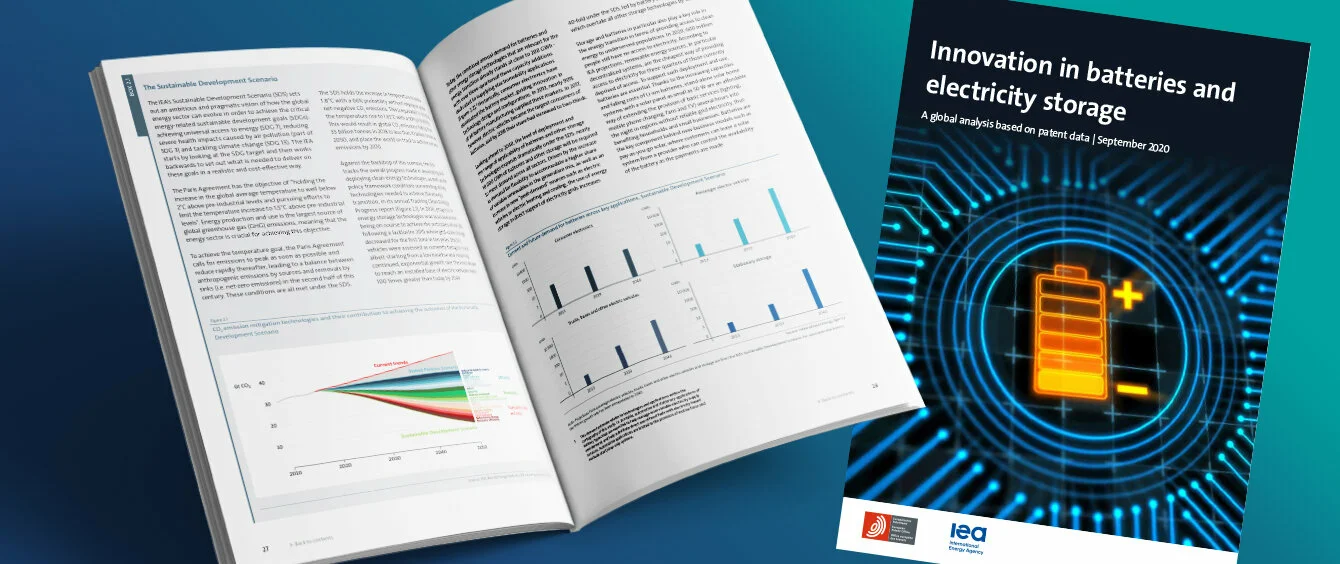Electrification is taking the world by storm – from EVs to truck lanes with pylons and overhead lines to domestic heat pumps. However, unlike with coal, oil or gas, the problem is that storage solutions for the electrical energy needed for these innovations are limited. This has dire consequences. According to experts from the International Energy Agency (IEA) and European Patent Office’s (EPO) new study, the energy transition is simply not going to happen without efficient electricity storage.
Battery innovation is playing a key role in the transition to clean energy technologies, the scientists confirm in their analysis entitled “Innovations in batteries and electricity storage – a global analysis based on patent data”. Nevertheless, big things are happening. Between 2005 and 2018, the number of patents being filed around the world in battery technologies and other electricity storage technologies grew at an annual average rate of 14 percent – four times faster than the average of all technical fields.
Tesla and co. were the main drivers of this change. “The first wave was driven by portable electrical devices. Now we are in the midst of a second wave, triggered by battery integration in electric cars,” says Ilya Rudyk, Senior Economist at the EPO. Billions of dollars are being invested in developing all manner of solutions from chemical compositions for lithium-ion batteries to new technologies targeting cell manufacturing, car installations, and everything in between. These innovations will benefit EVs such as the Tesla Model S or the Volkswagen ID.3. In addition to mobility-related applications, batteries – albeit oversized ones – can be used to temporarily store surplus green electricity and feed it back into the grid when needed – similarly to hydrogen-based power-to-x technologies.
Future demand for batteries will be huge. In its sustainability scenario, the IEA assumes that the world will need an energy storage capacity of almost 10,000 gigawatt hours in the form of batteries and other storage devices by 2040 in order to meet climate protection and sustainability targets – almost fifty times today’s figure. IEA head Fatih Birol stresses, “this forecast proves that energy storage will have to grow exponentially in the coming decades if the world is to meet international climate protection and sustainability targets. Accelerated innovation will be crucial for this growth.”
Photo credit: IEA
